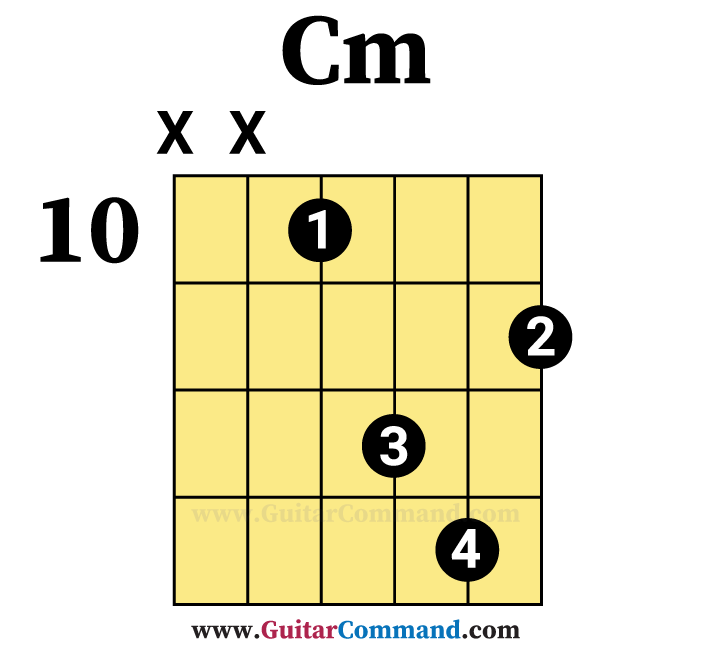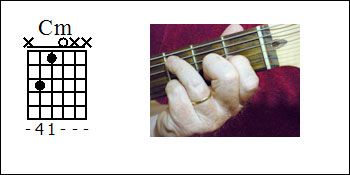
Remember, creating creative and interesting solos relies on a command of the fretboard, the more options you have the better you are going to be. In the next lesson we will learn how seventh chords are applied to the CAGED system and then we can move onto breaking these chord patterns down into smaller parts. The ones that are difficult, just break them up into smaller string groups. Learn them and play around with them over jam tracks. The diagrams below show the minor chords in the CAGED system. Getting used to these triad shapes is possibly more useful than thinking about chords that use all six strings. The thing to realise is all non seventh major and minor chords are Triads that just contain three notes. A lot of guitarists when learning stuff like this ten to think of a chord as needing to be played on all five or six strings. What’s more important is knowing where the notes are and being able to visualise the chord patterns. Sure, it’s great if you can do them but it’s not that important for lead guitar.


Minor chords based on the open positions are less popular than their major counterparts because they are hard to use and require a more finger stretches, the worst being the G minor and C minor chord forms. As we progress through these lessons we want to start thinking less and less about C-A-G-E-D patterns and just start thinking about chords and chord tones. The whole point of making the most of a method like this is to get you learning the fretboard and visualising the notes in an efficient, usable manner, one that avoids the all too common method of thinking only in shapes and scale patterns. It’s pointless going to all that trouble learning a system and then only using a small percentage of it’s versatility. Most teaching on the CAGED system focuses on major chords and scales.


 0 kommentar(er)
0 kommentar(er)
